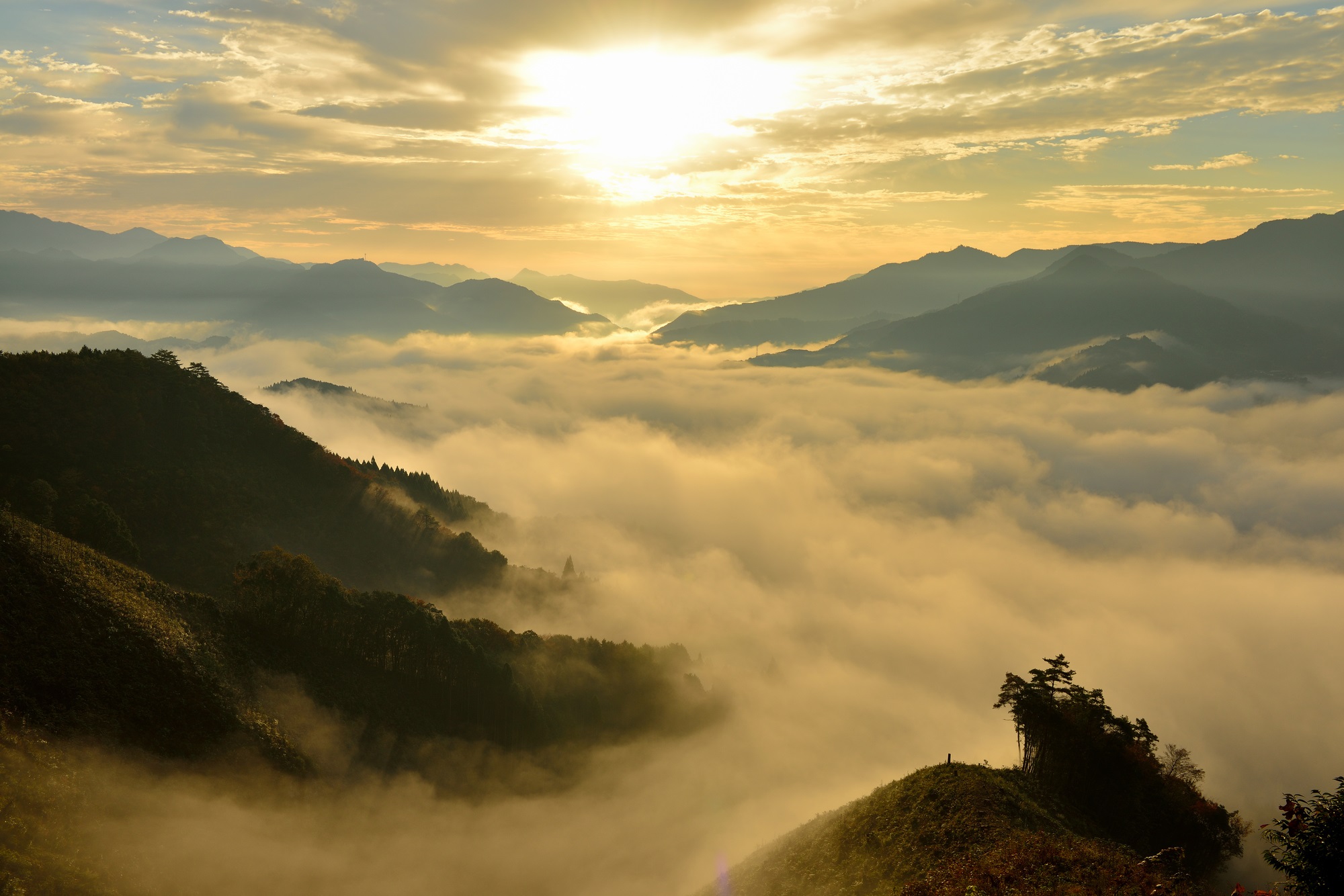Is the beginning of the world the same as the story of a chicken-egg?
-Learning the myth of how the world began as told in the Kojiki-
Exploring the Kojiki
Updated on Sep 05 2018
Japan’s oldest book, the Kojiki. It dramatically illustrates the history of Japan from the beginning of the world, the appearance of the deities, to the Imperial succession. Behind each impressive episode, there exist numerous “mysteries” that are yet to be solved even today. By exploring each, we will think about the origin of Japanese beliefs and culture.

The sea of clouds in Takachiho and Kunimigaoka
Is this what we imagine as the world where the gods live?
The Beginning of the World in Myths
The beginning of the world is depicted in various ways in myths around the world. In Greek mythology, it is said that gods were born from chaos; in Christianity, it is believed that God created the world in seven days, and so on.
How is it described in myths from Chinese literature? In the beginning, everything was in chaos, there was no distinction between things. This state is compared to a chicken-egg story at times, so it is called “the chicken-egg model,” or the “primitive chaotic model.” From that chaotic condition, it is said that after a while, light and clear things drifted upward and heavy, murky things sank downward. The things that rose upward became the sky, and the things that sank downward solidified and became the earth. This is called “the creation of the world” (the model in which the heavens and the earth open up and separate from each other).
The Original Way of Depiction in the Kojiki Mythology
The Nihon Shoki positions this Chinese origin myth as the beginning of Japanese mythology. On the other hand, in the Kojiki, the beginning of the world is described as “the creation of heaven and earth(天地初発之時).” What is notable is that it uses the Chinese character hatsu (発). Hatsu in the Kojiki is used to express “manifestation” or “start.” This implies that in the Kojiki, rather than depicting the “opening up of the heavens and earth,” the “beginning of the world” is described ambiguously.
In the Kojiki, at the beginning of the world there already exists a heavenly world called “Taka-amanohara”. This is also an original touch added in the Kojiki mythology. In this “Taka-amanohara” gods appear one after another. Izanaki and Izanami, the last gods to appear, get married and eventually give birth to the regions of Japan, and to many other gods.
The Common Understanding of Heaven and Earth
By the way, in the opening-of-heaven-and-earth mythology, clear and pure things drift upward and become the sky, and heavy and murky things become the earth. There is an understanding that the heaven where gods live is a clear world, and the earth where humans live is a murky and dirty world. This is recognized in all religions today, and it is generally seen as having begun with the origin of the world.
-Kokugakuin University has been selected “as a place for the promotion of the study of the Kojiki” by the private university branding project of the Ministry of Education in 2016.-

published in The Japan News on 3/9/2018
Masahiro TANIGUCHI
Research
Japanese literature of ancient times (Kojiki, Nihon-shoki, topography)
Papers
“The Old Man Says” in izumono-kuni-fudoki(2017/05/10)
Tatenui County and Mount Kannabi in Izumonokuni-fudo-ki : Reading What the Genius Says(Reading)(2009//)

